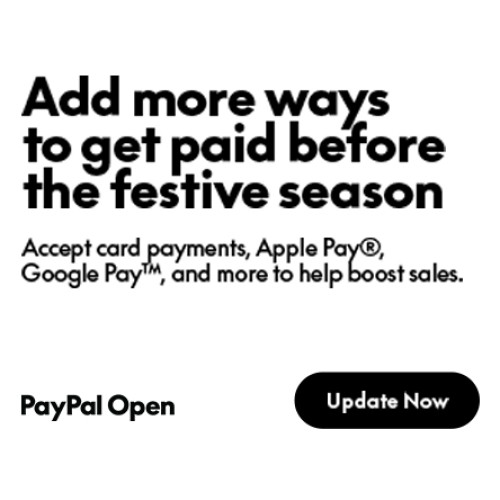It’s fair to say that every marketer recognizes the role and effectiveness of email marketing in digital marketing. A quick Google search on the ROI of email marketing will show you that this is one of the most cost-effective marketing channels to promote your business.
To be more specific, stats show email marketing can earn you up to $36 for every $1 spent.
But let’s not get ahead of ourselves. I have a question for you. Do you really think everyone running an email marketing campaign earns $36 for every dollar spent? That’s a rhetorical question. The answer is obviously no.
So many marketers are spending thousands on email marketing without seeing any meaningful returns. The real question, therefore, is; how do you set yourself apart to ensure your email campaigns are fruitful?
One of the simplest yet effective techniques to achieve that is through email segmentation.
Enough with the fluff. Let’s talk about email segmentation and how it can be the turning point for your email marketing campaigns and eCommerce business in general.
What is email segmentation?
Email segmentation is the process of dividing your email list into groups based on variables like age, gender, interests, or behavior. Doing this helps you tailor your message to each group and increase the chances of getting customer engagement.
Email segmentation is one of the most effective marketing strategies because it allows you to send the right message to the right customers every time. This leads to mindblowing results.
A data report by MailChimp reveals that segmented campaigns receive 14.31% higher open rates and 100.95% greater click-through rates than non-segmented campaigns.
And the best part is that segmentation is super effective across all industries. It doesn’t matter if you’re running an ecommerce or SaaS email marketing campaign; you can always rely on a great segmentation strategy to get you the best open and click-through rates.
So, the next question is how do you go about email segmentation, especially for an online store. Let’s talk about that next.
7 email segmentation strategies For E-Commerce To Boost Customer Engagement
You can segment your ecommerce email list in various ways depending on your unique goals and business needs. Also, while we’re going to discuss seven different techniques, keep in mind that you’re not limited to picking just one of them. You can combine several techniques for even better results.
1. Segment by customer demographics
Demographic segmentation is an efficient form of clustering and grouping customers using factors like gender, age, income level, occupation, etc.
You can enhance customer relationships significantly by segmenting your clients based on demographic characteristics and directing the right brand messaging to each segment.
For instance, if you run an online clothing store, gender will be a vital demographic for your email campaign. Another campaign can see businesses that sell office gadgets and home appliances targeting customers based on income level.
Before you begin segmenting, decide the data you will require from your subscribers. A useful approach to gathering data can be through a welcome email. Here is an example of a welcome email from SSene:
The welcome email has a link that lets you modify your email preferences. Once you click on the link, it directs you to the page below, where they request data like gender to enable them to send gender-specific offers.
Gathering enough information about your audience during the sign-up process will help you develop buyer personas that will improve your email campaigns.
However, exercise caution because requesting too much info may deter people from signing up. Decide which data points are most important for your company, then include questions about them during the registration process.
2. Segment by purchase history
Segmenting your customers into groups based on how they have behaved in the past is crucial for providing them with the best possible service. Doing so will allow you to target your offers and messages effectively, thereby increasing the purchase frequency of your current customers.
By segmenting your audience according to previous purchases, you may distinguish between high-value, medium-value, and low-value customers. Not only that, but you can also tell the type of items each customer is interested in.
With each customer purchase history, you have everything required to send a super specific and relevant email that’s likely to convert.
Essentially, look at each customer's purchasing history to determine the products they are most likely to be interested in and then include similar product recommendations in your emails.
For instance, if you run a wine store, you can segment repeat customers based on what type of wine they have purchased before (alcoholic, non-alcoholic, red, white, etc.).
Another way you can use segmentation by purchase history is to send targeted emails to customers that purchased products that need replacement or refills.
For example, if someone bought items like hair spray, cat food, or beauty products, you can calculate when it might run out and send a reminder suggesting a reorder.
Segmenting your customers by purchase history is definitely worth it. By understanding which groups of customers are most likely to buy what you are selling, you can boost sales significantly.
3. Segment by wishlist activity
Segmenting customers by wishlist activity is a great technique to identify and engage customers who may be on the fence about a purchase. This presents the ideal chance for some well-focused marketing campaign initiatives.
A shopper’s wishlist activity allows you to target customers who have tagged particular products on your website. By utilizing customer wishlist data, you can quickly reach this group of customers who are actively engaged and showing a desire to buy rather than just browsing.
With the aid of Gmail automation, you can engage these customers by sending them emails with reminders, product updates, promotions, and sales information about the things on their wish lists or comparable goods.
Wishlisters may also be motivated to buy by last-minute discounts or temporary promotions.
A wishlist is a cheat code for you as an online store owner. Your customers are quite literally telling you what they want.
So you need to use this data and get them to convert by sending relevant emails with an incentive like a discount or free shipping. And you can only achieve that if you have the wishlist feature on your site and have segmented your customers to know who’s wishing for what product.
4. Segment by location
Location data may be used in various ways, making segmentation by location a useful tool. It’s also useful for organizations where location has a significant impact on customer purchase decisions.
Knowing where your users reside allows you to segregate information and news related to particular areas or locations and even change the language and currency in which pricing is shown.
Once a subscriber makes a purchase from your website, you will learn their actual address. By grouping them according to their respective geographic time zones, you can send time-based email messages.
Customers from various locations, for instance, will receive emails at the time when they are most likely to read them. So, if your brand is hosting an event in Canada, only customers living in Canada will be informed about the event.
Also, when you know where your customers are located, you’ll be able to send them emails related to current seasons, as shown below.
Many brands will even send city-specific emails outlining workshops they are hosting in their physical locations or pop-up shops.
You can use this opportunity to meet loyal customers, receive product feedback, and even share your digital business card to grow brand awareness. For this kind of segmentation, the zip code is typically utilized as a reference.
5. Segment by browsing behavior
Segmenting by browsing behavior is an innovative way of targeting prospective customers based on their habits. By understanding where they are, what they are looking at, and their interests, businesses can create targeted content and email campaigns that will be more effective.
Let’s say you run an online gaming store, and a customer browses your store for a game console. Although the customer doesn't make any purchases, their frequent website searches indicate they’re interested in your product.
In these circumstances, offering the subscriber discounts on products he wants to purchase or displaying accessories for that item will help get them one step closer to making the purchase.
Segmenting your potential customers by browsing behavior is also super helpful when you have a massive inventory. Knowing what products to include in your emails can be a nightmare when you have such a store.
However, by using an email checker to track which pages and products each prospect is interested in, you can segment them accordingly and send them emails with relevant items.
Based on your user browsing behavior, you can also tell if the user is ready to buy or not. This is particularly important if you also have a blog.
If you’re implementing a full-funnel content roadmap on your website, you can tell when the user is browsing through product comparisons, for example. Use this data to target the user with the right information based on where they are in the customer journey. Answer their questions to help move them down the sales funnel.
How do you know what pages your prospects are looking at, though? It’s pretty simple, actually. Autoresponders like Active Campaign have a site-tracking feature that allows you to monitor browsing behavior.
6. Segment by cart abandonment
Did you know that 69.99% of online shopping carts are abandoned? This is something virtually all online stores struggle with. However, you can easily win back some of these cart abandoners through email marketing. But to do that, you’ll need to segment them.
Segmenting shoppers based on cart abandonment will help your business close more sales. It works like a charm, especially when you get creative and add items like time-limited discounts and social proof in the email.
Here’s an example of a well-crafted cart abandonment email. Notice the banner with a time-limited free shipping offer at the top?
It’s worth pointing out that although email segmentation can help you reduce cart abandonment, you’ll need to address the source problem. That means taking a closer look at why customers are abandoning their carts in the first place. For example, if it’s because your site looks insecure, then even email segmentation won’t be enough to resolve the issue.
7. Segment by email engagement
Finally, you can segment customers by email engagements. This simply means grouping your email list based on how active the recipients are. It can be done using email tracking and other methods. For example, you can have the most active users in one group and the least active in another. And by active, we mean recipients who open and interact with your emails.
By understanding the different engagement levels for your subscribers, you can take actions such as modifying your email template or content or even creating separate email sequences based on subscriber engagement level.
This is another place where great email marketing software would make your life easier. That’s because the best providers will always have this data readily available to you. You can then use the data to group your prospects and start targeting them with the right emails.
For example, you can create re-engagement campaigns featuring discounts and other incentives for the least active users.
You can also take it a notch higher by segmenting your audience based on the email topics they engage with. For example, suppose you notice a particular user only engages with emails about a particular product line. In that case, you can place them in the right group to ensure they only receive emails they’re interested in.
In Closing
It’s impossible to do advanced email marketing campaigns without email segmentation. You must place your email list into smaller groups to improve subscriber retention rates, boost engagement levels, and foster stronger customer relationships.
In this article, we looked at seven ways to segment your online store’s email list. You can segment by demographics, purchase history, location, wishlist activity, browser behavior, cart abandonment, and email engagement levels.
The ball is in your court now. You know what to do to make your email marketing campaigns worthwhile.
Author Bio
Nico Prins
Nico is the founder of Crunch Marketing, a SaaS marketing agency. The company works with enterprise SaaS clients, helping them scale lead generation globally across EMEA, APAC, and other regions.



Login and write down your comment.
Login my OpenCart Account